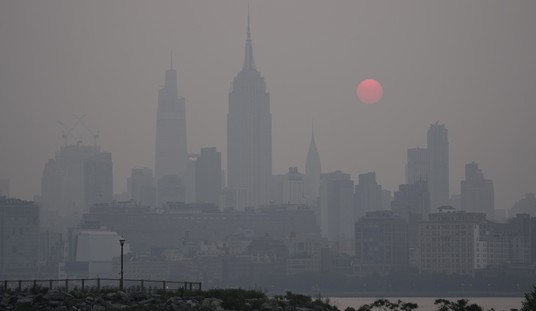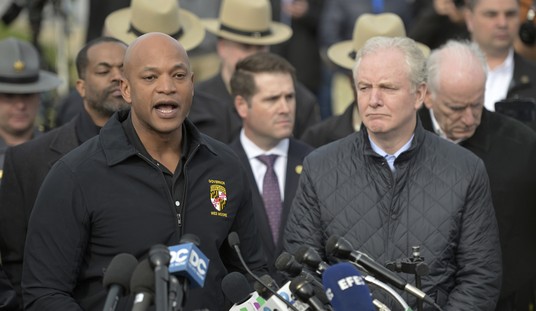When the computer system running your signature legislative achievement is slightly less functional than painting on a cave wall, you know you have a big problem. When that’s actually the good news, you know you have a really big problem.
Obamacare’s computer glitches have reduced the president’s eponymic health-care plan to fodder for late-night TV comedians. But in some ways the president is fortunate that the computer fiasco is obscuring the even bigger and more consequential problems facing the law.
For example, there’s the problem with keeping your current insurance. Despite presidential promises to the contrary — promises that, according to NBC News, the president knew were untrue — millions of Americans are finding out that, even if they like the plans they have now, they are being kicked off because those plans do not meet the requirements of Obamacare.
“The software problems of Healthcare.gov obscure much bigger structural disasters.”
Florida Blue, for example, is canceling nearly 300,000 policies, about 80 percent of its individual policies in the state. Kaiser Permanente in California has sent notices to 160,000 people — about half of its individual business in the state. Highmark in Pittsburgh is dropping about 20 percent of its individual-market customers, while Independence Blue Cross, the major insurer in Philadelphia, is dropping about 45 percent. That makes for more than 500,000 people losing their insurance policies in just three states.
In fact, roughly half of the 14 million people who buy insurance on the individual market are likely to lose their current insurance, according to Gerry Kominski, director of UCLA’s Center for Health Policy Research. And while most will be shifted to other policies, those new policies are likely to be more expensive.
Recommended
Meanwhile, in the group market, we are seeing companies begin to drop insurance for their workers. Roughly 160,000 workers at Walgreens are losing their coverage. So are some 20,000 part-time workers at Home Depot, and roughly 15,000 spouses of workers at UPS. Some estimates suggest that as many as 35 million workers could lose their current employer plan. Many will be forced into the exchanges, where insurance will cost them more. (Always assuming, of course, that they can find a way to actually purchase those plans.)
Being forced to change plans means that many Americans will not be able to keep their current doctors. Insurance plans available on the exchanges — and in most states the selection of available plans is extremely limited — have been rapidly dropping doctors and hospitals from their networks. According to a survey by the Medical Group Management Association, nearly 40 percent of doctors are uncertain about whether they will be included in networks of plans being sold through the exchanges. And a new study by PricewaterhouseCoopers warns that “insurers passed over major medical centers” in their California, Illinois, Indiana, Kentucky, and Tennessee networks, among others.
In Illinois, Blue Cross and Blue Shield said that at least some of its plans will no longer include Rush University Medical Center or Northwestern Memorial Hospital in their networks. In California, most insurers won’t include UCLA Medical Center, and none will include Cedars Sinai. Vanderbilt Hospital is being excluded from many plans in Tennessee. In New Hampshire, WellPoint, the only insurer participating in the exchange, covers just 14 of the state’s 26 hospitals, and has dropped about a third of the physicians who used to be part of its network.
The network downsizing is not confined to the exchanges either. In Connecticut, for example, Obamacare has forced United Healthcare to drop thousands of doctors from its Medicare Advantage plan. United also has dropped 10 to 15 percent of the physicians in its New Jersey Medicare network.
Costs are also a problem. As the Los Angeles Times reported this past weekend, millions of middle-class Americans are encountering Obamacare sticker shock. According to the Times, in California middle-income consumers face an estimated 30 percent rate increase, on average, even after receiving subsidies.
Elsewhere the premium increases could be even higher. Comparisons of exchange premiums with those found prior to October 1 show that premiums are higher now in at least 45 states, in some cases as much as 256 percent higher. As predicted, the young and healthy are seeing the biggest increases. And many experts warn that we won’t know the real extent of Obamacare premium increases until next year.
All these problems would remain even if Obamacare signups ran smoothly. And those signups are encountering their own problems, even aside from computer glitches. For example, the evidence suggests that the vast majority of those enrolling so far are simply people being passed off into Medicaid, with few signing up for private insurance.
In Washington state, of the roughly 35,000 who have “enrolled,” 31,000 are in Medicaid. Similarly, in Kentucky, fewer than 5,000 of the 25,000 total Obamacare “enrollees” signed up for private insurance. In Maryland, 96 percent of enrollees were Medicaid eligible.
This, combined with early evidence that those who purchase private insurance through an exchange are older and sicker than expected, suggests the possibility that adverse selection may be much worse than predicted. If so, the entire premise of Obamacare — the young and healthy overpaying to subsidize the old and sick — would be undermined.
So here’s what Obamacare’s first month has shown: You may not be able to keep your current insurance plan; you may not be able to keep your current doctor; you are probably going to have to pay more; and the entire program could come crashing down in an adverse-selection death spiral.
It may not be long before Obamacare supporters look back longingly to the days when the health-care law was just a bad joke.

























Join the conversation as a VIP Member